Wildlife Disease Association Challenge Grant
Categories

A healthy planet is predicated on healthy and biodiverse populations. While diseases among wildlife are anything but new, they continue to evolve and require close monitoring to protect stable ecosystems, and ensure vulnerable species that have been already pushed to the brink of extinction due to human activities are not lost.
The Projects
Browse the participating projects
Do Pacific Northwest marine mammals carry antibiotic-resistant bacteria from land animals?
Antibiotic resistance, a global concern, is a significant health issue of animals and humans. Resistant...
How deadly is the emergence of malaria in Common Loons?
Recently, we have documented malaria parasites killing Common Loons, an iconic species of the northern wilderness...
Are Costa Rican salamanders susceptible to Batrachochytrium salamandrivorans?
The emergent fungal pathogen, Batrachochytrium salamandrivorans (Bsal), poses a significant threat to global...
Combating tuberculosis in African rhinoceros
Recently, tuberculosis was discovered in populations of African black and white rhinoceroses in Kruger National...
Ticks and tick-borne pathogens of the Mojave Desert Tortoise
Ornithodoros ticks occur in the Mojave desert and frequently parasitize desert tortoises. These ticks carry...
How does avian social behavior relate to risk of infection by malarial parasites?
Blood parasites can have devastating effects on bird populations, and climate change is expected to increase...
Development of non-invasive diagnostics for endotheliotropic herpesvirus in free-ranging Asian elephants
Elephant endotheliotropic herpes virus hemorrhagic disease (EEHV-HD) is the leading cause of death of young...
Why are frigatebird chicks so vulnerable to a viral disease?
A novel herpesvirus likely indigenous to the magnificent frigatebird (Fregata magnificens) has been linked...
Which marine mammal eats the most microplastics?
Marine mammals, like dolphins, eat food contaminated by microplastic pollution, which could cause serious...
Probiotics for wild boreal toads facing a deadly fungal disease
A fungal pathogen spread around the globe by human activities now threatens many amphibians, including boreal...
Is Mycoplasma bovis maintained in Wyoming pronghorn antelope (Antilocapra americana) reservoirs?
Mycoplasma bovis (M. bovis) is an economically important bacterial pathogen of cattle. We recently documented...
Dead wombats walking: Seasonal nutrition and mange in free-ranging bare-nosed wombats
Bare-nosed wombats are under threat from sarcoptic mange caused by the sarcoptic mange mite, Sarcoptes scabieii...
Is habitat quality a key factor in determining whether koalas develop chlamydial disease?
Northern koala populations have declined rapidly in the last two decades and localised extinctions are predicted...
Can we utilize natural bat colony behavior as a vaccination strategy?
Bats are one of the most prolific and ecologically important groups of mammals on the planet, but they are...
What kills elephants at waterholes in Zimbabwe?
Botswana recently experienced severe, highly publicized mortality of elephant, which authorities attribute...
How do different strains of canine distemper virus alter disease outcomes for wildlife?
Distemper is a contagious frequently lethal disease that threatens many wild mammals, including endangered...
Is lead toxicity a contributing factor to large scale songbird population decline?
Significant declines in North American songbird populations over the past 50 years highlight the need for...
Understanding transmission of a deadly fungus to prevent a salamander apocalypse in North America
Salamanders in Europe are dying from a disease caused by the "salamander devouring fungus", Bsal. This pathogen...
How are cave-dwelling amphibians responding to parasitic and environmental threats?
Amphibian declines are occurring at alarming rates worldwide. To ensure a future for amphibians, we must...
Do zoonotic pathogens exist in Fijian bats and if so what are the risks of exposure to humans?
Interactions between humans and bats can be both beneficial and detrimental. Habitat loss worldwide has...
Creating a refuge from amphibian chytrid fungus for the critically endangered mountain chicken
No project has successfully managed the impact of introduced chytrid fungus on a amphibian population in...
Building an active surveillance system for lead in Northeastern wildlife
Many species of wildlife are exposed to lead in the environment, sometimes with devastating consequences...
Effects of lead exposure in Scandinavian brown bears
Toxicants of human origin are a growing concern to conservation. Lead (Pb) is a toxicant that accumulates...
Can aerial photography be used to measure leatherback sea turtle body condition?
Unlike hard-shelled sea turtles, the leatherback’s soft-shell changes shape relative to their nutritional...
Can blood lactate levels help guide treatment for birds suffering from monofilament line entanglement injuries?
Fishing line entanglement injuries are a common problem affecting over 200 different wildlife species globally...
Assessing the pathogens of wild mammals in Los Angeles County
Urban wildlife can harbor and transmit many diseases that have the potential to affect humans, domestic...
Health impacts of plastic on inshore fish in the Florida Keys
Tiny pieces of plastic (microplastics), have been found at the highest camp on Mt. Everest (26,000 ft up...
Investigating the role of innate immune function in snakes battling fungal disease
Ophidiomycosis (snake fungal disease) is a threat to snake health. Caused by the fungus Ophidiomyces ophiodiicola...
Comprehensive health assessment of gopher tortoises inhabiting fragmented habitat in South Florida
Low fecundity has been reported for many gopher tortoise (Gopherus polyphemus) aggregations in south Florida...
More About This Challenge
The sciency details
Challenge Aims
In partnership with Experiment, the Wildlife Disease Association is calling for research proposals in the area of wildlife health and disease.
The call is open to all wildlife disease researchers worldwide. The Wildlife Disease Association is particularly interested in work on the following diseases:
- small ruminant rinderpest and other morbiliviruses
- chythrid disease
- white-nose syndrome
- chronic wasting disease
- autoimmune diseases
- tuberculosis
- rabies
- insect or bat borne viral diseases
- any wildlife population health problems of anthropogenic origin
- wildlife zoonoses
- diseases that threaten survival of free-ranging species or discrete populations
Experiment is the largest crowdfunding platform for scientific research with a funding success rate of 44%. Experiment's mission is to democratize the research process so anyone can do science. The average budget of a successful proposal is $4,000. This funding mechanism is commonly used by graduate students paired with a faculty member, but is not required.
The call for proposal will last for 31 days from July 1, 2018 until August 1, 2018. Proposals should be submitted directly on the Experiment site at experiment.com/grants/WDA.
Proposals submitted for the call will be approved or rejected by August 7th and launched on August 21st for a 30 day campaign. Projects will be promoted by Experiment, WDA and allied organizations.
During the 30 day campaign participants will be expected to share the projects with their networks. WDA will sponsor 5 prizes.
$1,000 will be awarded to the project with the most number of donors on the 20th day.
$500 will be awarded to the project with the second most number of donors on the 20th day.
Four additional $100 prizes will be awarded to the top 4 crowd supported proposals whose author(s) are WDA members on the 30th day of the campaign.
Previously funded wildlife disease projects:
Why are some bats naturally immune to White-nose Syndrome?
Can we stop amphibian extinction by increasing immunity to the frog chytrid fungus?
Do birds carry Lyme disease?
About Wildlife Disease Association:
In March 1951, a group of 28 U.S. and Canadian scientists interested in wildlife diseases founded the Wildlife Disease Committee, which became the Wildlife Disease Association (WDA), a 501 non-profit organization. The mission of WDA is to acquire, disseminate, and apply knowledge of the health and diseases of wild animals in relation to their biology, conservation, and interactions with humans and domestic animals.
Project Eligilibity
To qualify, proposals must meet the following requirements:1. Involve a health or disease issue in free-ranging marine or terrestrial wildlife.
2. Have implications for wildlife populations and ecosystems in which wildlife live.
3. Emphasize species conservation and application of a One Health approach.

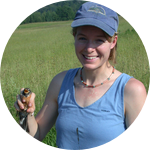



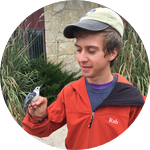
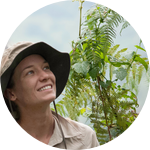
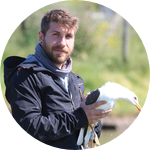
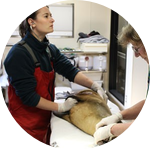


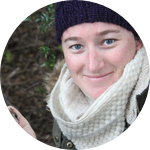
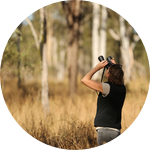

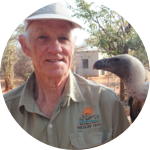

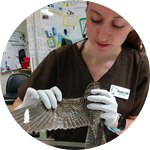
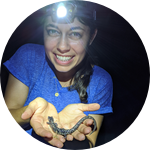

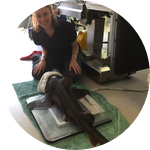




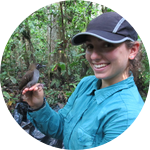




 Challenge Grants
Challenge Grants